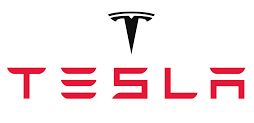Wheel Specifications (Factory)
| Wheel Type | Location | Size | Offset (mm) |
|---|---|---|---|
| 19″ Cardenio | Front | 9.5J x 19 | 40 |
| Rear | 10.5J x 19 | 45 | |
| 21″ Arachnid | Front | 9.5J x 21 | 40 |
| Rear | 10.5J x 21 | 45 |
| Lug Nut Torque | 129 lb. ft (175 Nm) |
| Lug Nut Socket Size | 21 mm |






| Wheel Type | Location | Size | Offset (mm) |
|---|---|---|---|
| 19″ Cardenio | Front | 9.5J x 19 | 40 |
| Rear | 10.5J x 19 | 45 | |
| 21″ Arachnid | Front | 9.5J x 21 | 40 |
| Rear | 10.5J x 21 | 45 |
| Lug Nut Torque | 129 lb. ft (175 Nm) |
| Lug Nut Socket Size | 21 mm |
| Tire Type | Location | Size |
|---|---|---|
| 19″ All-Season | Front | 255/45R19 104W XL |
| 19” Summer | Front | 255/45R19 104Y XL |
| 21″ Summer | Front | 265/35ZR21 101(Y) XL |
| Tire pressures vary depending on the type of tires fitted. Refer to the tire pressures printed on the Tire and Loading Information label. This label is located on the center door pillar and is visible when the driver’s door is open (see Maintaining Tire Pressures). | ||
| Winter tires can be purchased from a Tesla service center or may be available for purchase on the Tesla web site. | ||
Laws require tire manufacturers to place standardized information on the sidewall of all tires. This information identifies and describes the fundamental characteristics of the tire. It also provides the tire identification number (TIN) for certification of safety standards, and in case of a recall.
| 1 | Tire category. P indicates that the tire is for passenger vehicles. |
| 2 | Tire width. This 3-digit number is the width (in millimeters) of the tire from sidewall edge to sidewall edge. |
| 3 | Aspect ratio. This 2-digit number is the sidewall height as a percentage of the tread width. So, if the tread width is 205 mm, and the aspect ratio is 50, the sidewall height is 102 mm. |
| 4 | Tire construction. R indicates that the tire is of Radial ply construction. |
| 5 | Wheel diameter. This 2-digit number is the diameter of the wheel rim in inches. |
| 6 | Load index. This 2 or 3-digit number is the weight each tire can support. This number is not always shown. |
| 7 | Speed rating. When stated, indicates the maximum speed (in mph) at which the tire can be used for extended periods. Q=99 mph (160 km/h), R=106 mph (170 km/h), S=112 mph (180 km/h), T=118 mph (190 km/h), U=124 mph (200 km/h), H=130 mph (210 km/h), V=149 mph (240 km/h), W=168 mph (270 km/h), Y=186 mph (300 km/h), (Y)=vehicle’s top speed (exceeds the “Y” rating). |
| 8 | Tire composition and materials. The number of plies in both the tread area and the sidewall area indicates how many layers of rubber coated material make up the structure of the tire. Information is also provided on the type of materials used. |
| 9 | Maximum tire load. The maximum load which can be carried by the tire. |
| 10 | Maximum permissible inflation pressure. This pressure should not be used for normal driving. |
| 11 | U.S. DOT Tire Identification Number (TIN). Begins with the letters DOT and indicates that the tire meets all federal standards. The next 2 digits/letters represent the plant code where it was manufactured, and the last 4 digits represent the week and year of manufacture. For example, the number 1712 is used to represent the 17th week of 2012. The other numbers are marketing codes used at the manufacturer’s discretion. This information can be used to contact consumers if a tire defect requires a recall. |
| 12 | Treadwear grade. This number indicates the tire’s wear rate. The higher the treadwear number is, the longer it should take for the tread to wear down. A tire rated at 400, for example, lasts twice as long as a tire rated at 200. |
| 13 | Traction grade. Indicates a tire’s ability to stop on wet roads. A higher graded tire should allow you to stop your vehicle in a shorter distance than a tire with a lower grade. Traction is graded from highest to lowest as AA, A, B, and C. |
| 14 | Temperature grade. The tire’s resistance to heat is grade A, B, or C, with A indicating the greatest resistance. This grading is provided for a correctly inflated tire, which is being used within its speed and loading limits. |
The following information relates to the tire grading system developed by the National Highway Traffic Safety Administration (NHTSA), which grades tires by tread wear, traction and temperature performance. Tires that have deep tread, and winter tires, are exempt from these marking requirements.
Where applicable, quality grades are found on the tire’s sidewall between the tread shoulder and maximum section width. For example:
The quality grades are described next.
The treadwear grade is a comparative rating based on the wear rate of the tire when tested under controlled conditions on a specified government test course.
For example, a tire graded 150 wears one and a half times better on a government test course than a tire graded 100. The relative performance of tires depends on the actual conditions of their use, however, and can depart significantly from the norm due to variations in driving habits, service practices, road characteristics, and climate.
The traction grades, from highest to lowest, are: AA, A, B, and C. These grades represent a tire’s ability to stop on wet pavement as measured under controlled conditions on test surfaces of asphalt and concrete. A tire marked C might have poor traction performance.
The temperature grades are A (the highest), B, and C, representing the tire’s resistance to the generation of heat and its ability to dissipate heat when tested under controlled conditions on a specified indoor laboratory test wheel. Sustained high temperature can cause the tire to degenerate and reduce tire life, and excessive temperature can lead to sudden tire failure.
The grade C corresponds to the minimum level of performance that all passenger car tires must meet under the Federal Motor Safety Standard No. 109. Grades B and A represent levels of performance on the laboratory test wheel that exceed the minimum requirements.
| Accessory Weight | The combined weight (in excess of those items replaced) of items available as factory installed equipment. |
| Bead | The inner edge of a tire that is shaped to fit to the rim and form an air tight seal. The bead is constructed of steel wires which are wrapped, or reinforced, by the ply cords. |
| Cold Tire Pressure | The air pressure in a tire that has been standing in excess of three hours, or driven for less than one mile. |
| Curb Weight | The weight of a standard vehicle, including any optional equipment fitted, and with the correct fluid levels. |
| Gross Vehicle Weight | The maximum permissible weight of a vehicle with driver, passengers, load, luggage, and equipment. |
| kPa (kilo pascal) | A metric unit used to measure pressure. One kilo pascal equals approximately 0.145 psi. |
| Maximum Inflation Pressure | The maximum pressure to which the tire should be inflated. This pressure is given on the tire side wall in psi (lbf/in2). CAUTION This pressure marked on the tire is the maximum allowed by the tire manufacturer. It is not the pressure Tesla recommends using for Model S. |
| Maximum Loaded Vehicle Weight | The sum of curb weight, accessory weight, vehicle capacity weight, and production options weight. |
| Production Options Weight | The combined weight of options installed which weigh in excess of 3 lb (1.4 kg) more than the standard items that they replaced, and are not already considered in curb or accessory weights. |
| PSI (lbf/in2) | Pounds per square inch (the unit used to measure tire pressure). |
| Recommended Tire Inflation Pressure | Tire inflation pressure, established by Tesla, which is based on the type of tires that are mounted on the vehicle at the factory. This information can be found on the Tire and Loading Information label located on the door pillar. |
| Rim | The metal support for a tire, or tire and tube, upon which the tire beads are seated. |
| Vehicle Capacity Weight | The number of seats multiplied by 150 lbs (68 kg) plus the rated amount of load/luggage. |
| Normal occupant weight | 68 kilograms (150 lbs) times the number of occupants specified in the second column of the tables for calculating load limits (see Vehicle Loading). |
| Occupant distribution | Distribution of occupants in a vehicle. |
| Passenger car tire | A tire intended for use on passenger cars, multipurpose passenger vehicles, and trucks, that have a gross vehicle weight rating (GVWR) of 10,000 lbs (4536 kg) or less. |
| Rim diameter | Nominal diameter of the bead seat. |
| Rim size designation | Rim diameter and width. |
| Rim type designation | The manufacturing industry’s designation for a rim by style or code. |
| Rim width | Nominal distance between the rim’s flanges. |
| Vehicle maximum load on the tire | Load on an individual tire that is determined by distributing to each axle its share of the maximum loaded vehicle weight and dividing by two. |
| Vehicle normal load on the tire | Load on an individual tire that is determined by distributing to each axle its share of the curb weight, accessory weight, and normal occupant weight and dividing by two. |
| Bead separation | A breakdown of the bond between components in the bead. |
| Bias ply tire | A pneumatic tire in which the ply cords that extend to the beads are laid at alternate angles substantially less than 90 degrees to the center line of the tread. |
| Carcass | The tire structure, except tread and sidewall rubber which, that when inflated, bears the load. |
| Chunking | The breaking away of pieces of the tread or sidewall. |
| Cord | The strands forming the plies in the tire. |
| Cord separation | The parting of cords from adjacent rubber compounds. |
| Cracking | Any parting within the tread, sidewall, or inner liner of the tire extending to cord material. |
| Extra load tire | A tire designed to operate at higher loads and higher inflation pressure than the corresponding standard tire. |
| Groove | The space between two adjacent tread ribs. |
| Inner liner | The layer(s) forming the inside surface of a tubeless tire that contains the inflating medium within the tire. |
| Inner liner separation | The parting of the inner liner from cord material in the carcass. |
| Load rating | The maximum load that a tire is rated to carry for a given inflation pressure. |
| Maximum load rating | The load rating for a tire at the maximum permissible inflation pressure for that tire. |
| Measuring rim | The rim on which a tire is fitted for physical dimension requirements. |
| Open splice | Any parting at any junction of tread, sidewall, or inner liner that extends to the cord material. |
| Outer diameter | The overall diameter of an inflated new tire. |
| Overall width | The linear distance between the exteriors of the sidewalls of an inflated tire, including elevations due to labeling, decorations, or protective bands or ribs. |
| Ply | A layer of rubber-coated parallel cords. |
| Ply separation | A parting of rubber compound between adjacent plies. |
| Pneumatic tire | A mechanical device made of rubber, chemicals, fabric and steel or other materials, that, when mounted on an automotive wheel, provides the traction and contains the gas or fluid that sustains the load. |
| Radial ply tire | A pneumatic tire in which the ply cords that extend to the beads are laid at substantially 90 degrees to the center line of the tread. |
| Reinforced tire | A tire designed to operate at higher loads and at higher inflation pressures than the corresponding standard tire. |
| Section width | The linear distance between the exteriors of the sidewalls of an inflated tire, excluding elevations due to labeling, decoration, or protective bands. |
| Sidewall | The portion of a tire between the tread and bead. |
| Sidewall separation | The parting of the rubber compound from the cord material in the sidewall. |
| Snow tire | A tire that attains a traction index equal to or greater than 110, compared to the ASTM E1136-93 (re-approved 2003, incorporated by reference, see §571.5) Standard Reference Test Tire when using the snow traction test as described in ASTM F1805-00 (incorporated by reference, see §571.5), and that is marked with an Alpine Symbol specified in S5.5(i) on at least one sidewall. |
| Test rim | The rim on which a tire is fitted for testing, and may be any rim listed as appropriate for use with that tire. |
| Tread | The portion of a tire that comes into contact with the road. |
| Tread rib | A tread section running around the circumference of a tire. |
| Tread separation | The pulling away of the tread from the tire carcass. |
| Tread wear indicators (TWI) | The projections within the principal grooves designed to give a visual indication of the degrees of wear of the tread. |
| Wheel-holding fixture | The fixture used to hold the wheel and tire assembly securely during testing. |
Access the comprehensive 2010-2018 VW Jetta Passenger Fuse Box Diagram to troubleshoot electrical issues effectively.…
Explore the comprehensive VW Jetta Passenger Fuse Box Diagram to troubleshoot electrical issues effectively. Understand…
Under Hood Fuse Box Location Remove the front luggage compartment cover. Under Hood Fuse Box…
2022 Kawasaki NINJA H2 SX SE Brake Lever Adjuster Owner's Manual NOTICE Only adjust the front…
2023 Land Rover Range Rover Evoque Exiting The Vehicle SINGLE LOCKING WARNING Before exiting the…
2023 Land Rover Range Rover Evoque Front Seats FRONT SEAT SAFETY Make sure to read…